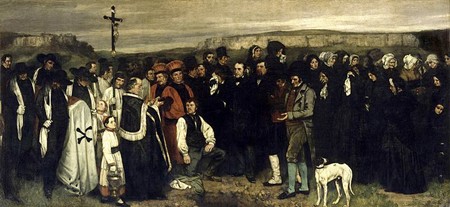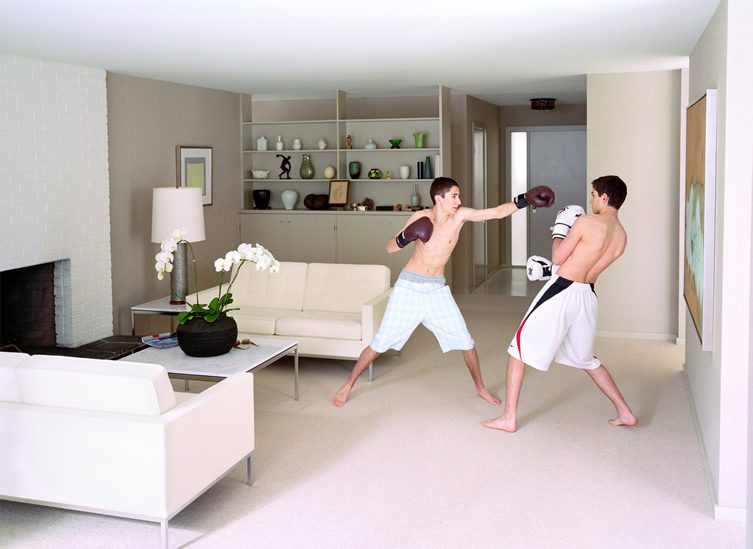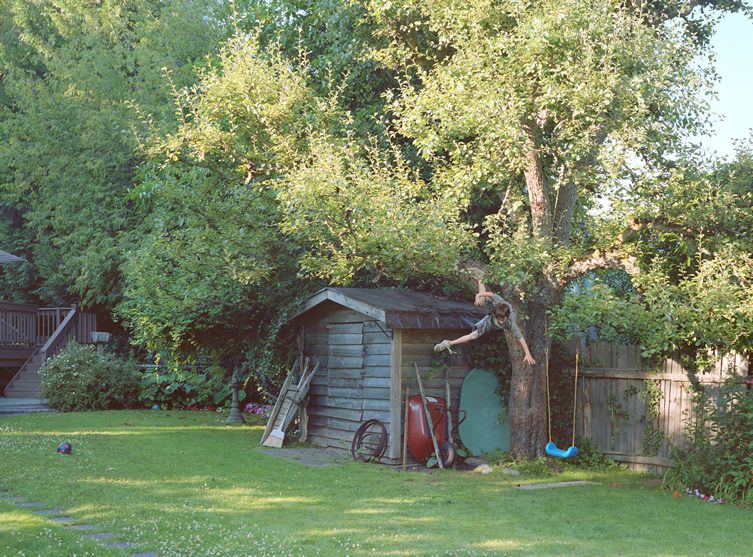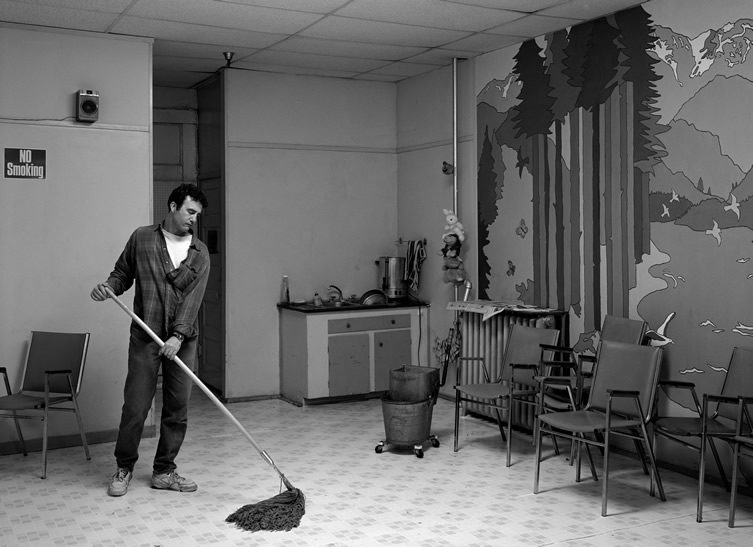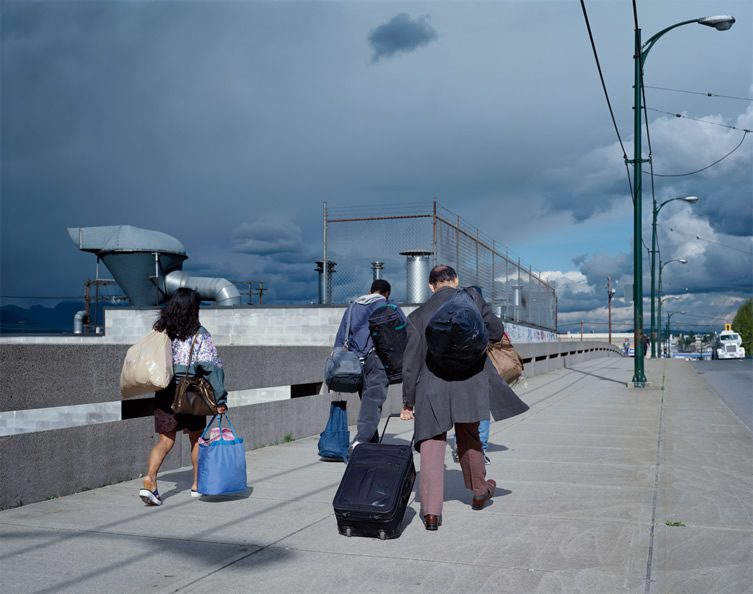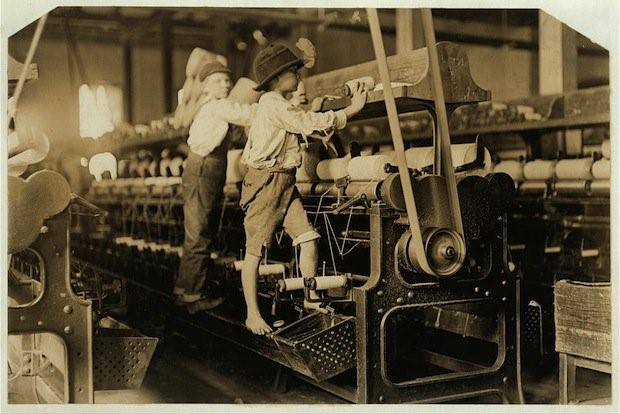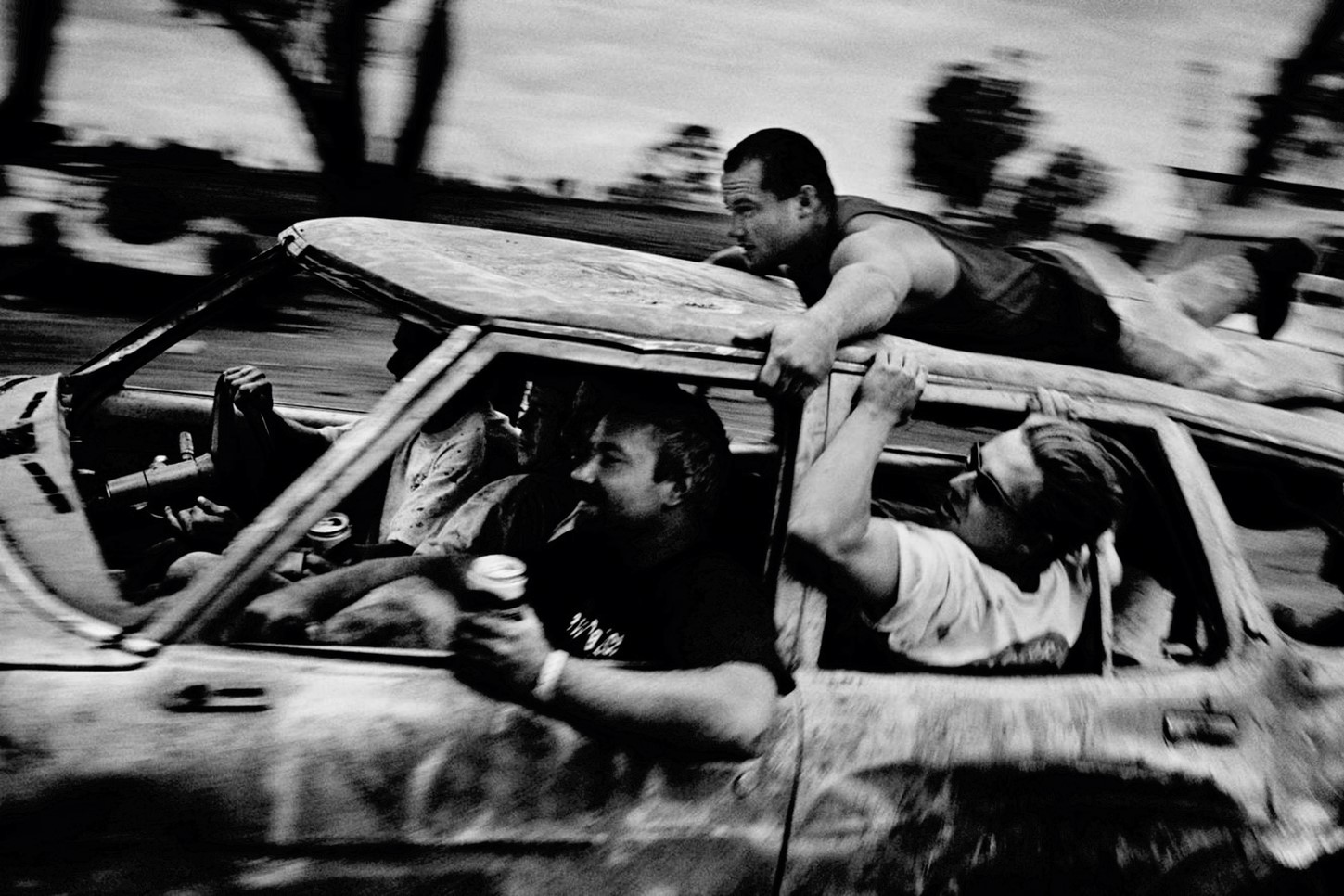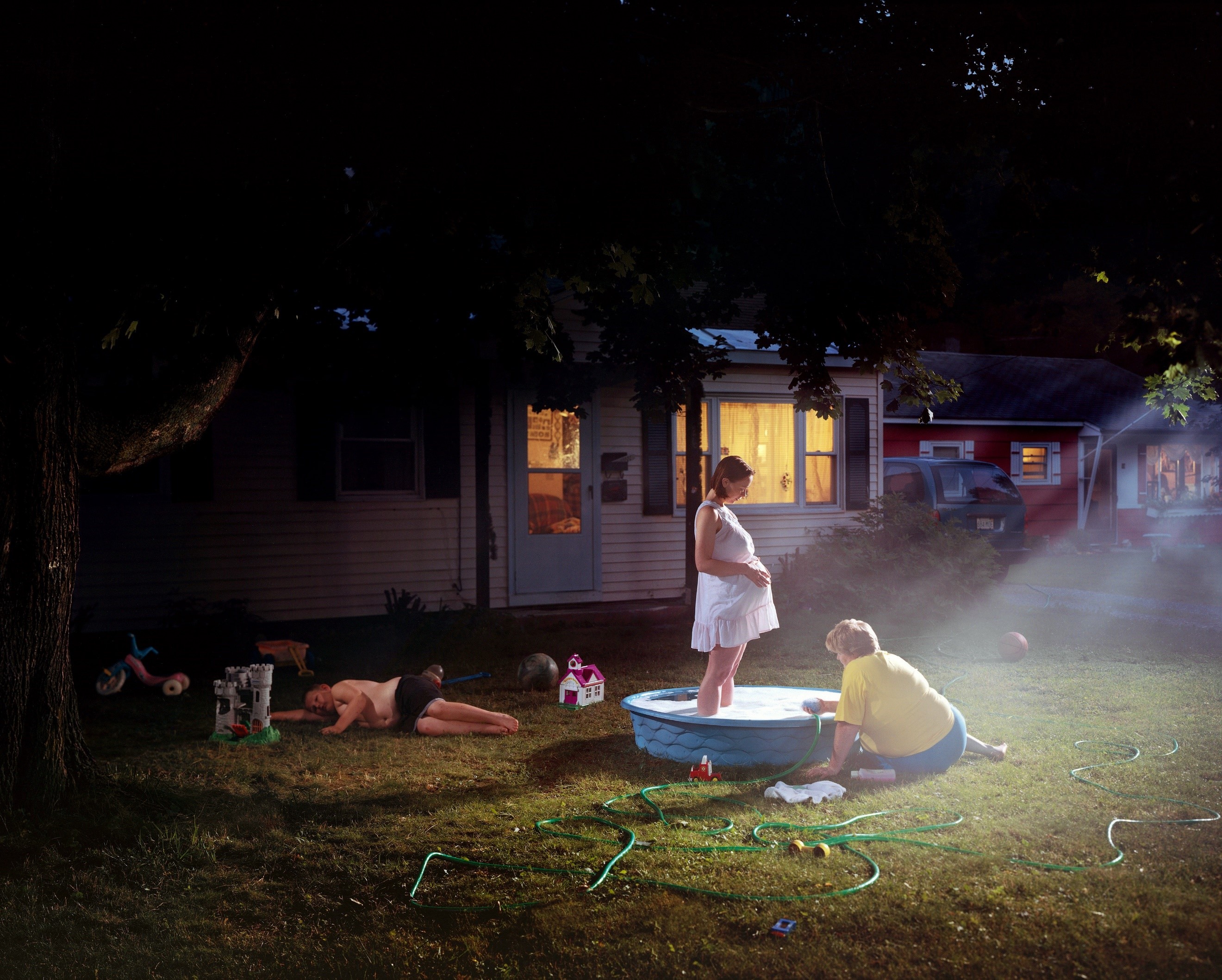Tableaux Photography
Tableaux is a style of photography where people are staged in a constructed environment and a pictorial narrative is conveyed often in a single image, or a series of images that often makes references to fables, fairy tales, myths, unreal and real events from a variety of sources such as paintings, film, theatre, literature and the media.
This type of photography offers a much more open-ended explanation, which allows the viewer to make a subjective judgement on the interpretation of the image. Tableaux photographs often tell a story, which could be created by a model posing for the camera, with theatrical props, costumes and dramatic lighting.

Tableaux Photography is mostly looked through a subjective lens, which allows the viewers to interpret the image in several different ways, creating their own reason for the images creation. I prefer images, which are subjective as I personally like the image of everyone seeing the image differently.
Artist Reference– Anna Gaskell vs Hannah Starkey
These are two artists who either looks at childhood or teenage years in the theme of memories or fairy tales either using literature or cinema photography to do so.
Anna Gaskell
https://www.guggenheim.org/artwork/artist/anna-gaskell

She was born in Des Moines, Iowa, her early photography was based on self-portraits. However, soon she began photographing girls at they acted out stories, embodying characters from Alice in Wonderland. These images are seen in her series of “wonder” and “Override” where groups of girls dressed in matching uniforms are shown in ambiguous and ominous situations.





These images are either from the series “Wonder” or “Override” they both explore a similar theme and relate in some way. She often takes a literary starting point in her photography, as they can see these photographs are all based on the story of Alice in Wonderland. Her frequently uses adolescent girls as her models within her photography. You can see that her photographs are carefully planned and staged as the environments used are ‘artificial’ as they only exist to be photographed.
Gaskell’s photos are taken as if they are taking the viewer through the events, which appear in Alice in Wonderland. In one of the photographs (untitled #9) a wet bar of soap has been dragged along a wooden floor. In another image later on (untitled #17) it appears again, forced into a girl’s mouth. This suspension of time and causality lends Gaskell’s images a remarkable ambiguity that she uses to evoke a vivid and dreamlike world.
The models in Gaskell’s photographs do not represent individuals, but act out the contradictions and desires of a single person. While their unity is suggested by their identical clothing, the mysterious and often cruel rituals they act out upon each other may be metaphors for disorientation and mental illness. In wonder and override, the character collectively evoked is Alice, perhaps lost in the Wonderland of her own mind, unable to determine whether the bizarre things happening to her are real or the result of her imagination.
ANALYSIS:

This image uses the colour scheme of blue, yellow and green, the yellow stands out within the image and is exaggerated by the bleach blonde hair. There is artificial lighting coming from the models right hand bottom corner, which makes the models face look almost eery and spooky. She looks over her left shoulder as if she feels she always needs to watch her back, which is a scary idea this is displayed through the image. The model looks away from the camera and appears to not know it is there, as if it is a still shoot of a scene, which is moving. Alice in Wonderland is very strange and unpredictable, which would make Alice feel cautious and apprehensive to what would happen next. She wears the colours, which are seen in the original Alice in Wonderland, which makes it clear which character she is trying to portray. Alice in Wonderland has a spine-chilling story line, which is not what we believed as children, in fact the story was about something a bit more disturbing.
The meaning behind Alice in Wonderland:
Alice was the daughter of the dean of Christ Church, she attended the Oxford college where Dodgson taught mathematics, and she wasn’t the only young girl he befriended. To the 21st Century mind, there is something that makes one deeply uneasy about this scenario. Though there is no evidence of anything untoward in Dodgson’s relationships, it’s hard not to view as suspect a grown man who enjoyed having his young playmates sit on his lap and pose for photographs, often under-dressed.
She begins to take drugs, which makes her feel uncomfortable in her body, which undergoes a series of extreme changes; her sense of her self becomes destabilised, leaving her uncertain of her own identity; she butts heads with authority and strives to understand seemingly arbitrary rules, the games that people around her play, and even death.
Since the 1960s, drug-lovers have read Alice’s antics as one big trip. The lyrics to Jefferson Airplane’s White Rabbit did a fair bit to cement the association: “Remember what the Dormouse said / Feed your head, feed your head”. From its heat-addled opening scene, there is a psychedelic vibe – besides all those pills, time moves erratically, and the grinning Cheshire Cat is here one minute, gone the next.
“You take the blue pill, the story ends, you wake up in your bed and believe whatever you want to believe. You take the red pill, you stay in Wonderland, and I show you how deep the rabbit hole goes.”
An article on what it’s about
Hannah Starkey

She was born in Belfast, and studied photography at the Royal College of Art. Her more recent images have an almost theatrical character, often depicting women in staged settings, for example with a Coca Cola in a pub or inside a public lavatory. She describes her work as “explorations of everyday experiences and observations of inner city life from a female perspective.”





These are all images from her series entitled “woman”, which focuses a woman’s perspective and put women front and center in her photographs. Her life influences her work greatly as she herself is female and her perception of what its like to be a female in our culture and therefore what the expectations are of the woman of this particular culture. She finds it interesting to look at the two different generations between herself and her daughter as expectations have changed, which has made them much more unrealistic. Therefore, are work explores what is expected from a young woman to an older woman.
This project took over 20 years to make and was slightly biographic as she revealed herself in some of these images as well as using models and strangers. She explored this idea on a personal level but also on a socialite level. Her images show different types of woman and what would be their perception of being this sort of women. In all the images they are all engaging in regular routines, showing the everyday life of women. Starkey captures these generic ‘in between’ moments of daily life with a sense of relational detachment. Her still images operate as discomforting ‘pauses’; where the banality of existence is freeze-framed in crisis point, creating reflective instances of inner contemplation, isolation, and conflicting emotion.
Through the staging of her scenes, Starkey’s images evoke suggestive narratives through their appropriation of cultural templates: issues of class, race, gender, and identity are implied through the physical appearance of her models or places.Starkey often uses composition to heighten this sense of personal and emotional disconnection, with arrangements of lone figures separated from a group, or segregated with metaphoric physical divides such as tables or mirrors.
Often titling her work as Untitled, followed by a generalised date of creation, her photographs parallel the interconnected vagueness of memory, recalling suggestions of events and emotions without fixed location or context. Her work presents a platform where fiction and reality are blurred, illustrating the gap between personal fragility and social construction, and merging the experiences of strangers with our own.
When asked about her photography being staged she answers:
“I control most elements of the image, however there’s an element I do not control and that is chance or luck. What happens when the shutter is open for that split second is where the magic happens.”
ANALYSIS:

In this photograph the two women are sat in a bar/pub opposite each other, maybe mother and daughter. The pub looks dark and grotty the only light coming in is from the window behind the table, which means it is natural light being used. The man focus of the image is the woman directly in the middle of the image, this is because the light is shining on her, which makes her the lightest part of the photograph, which is what we are usually attracted to the most. They are both from different generations, which is obvious through the different styles of hair and clothes. The younger girl is wearing what looks like a football top as she sits with her head tilted to the side, leaning on her hand, with a bored look on her. This could be because the older woman is talking too much and she is finding it boring and tedious, she is wearing a blue velvet dress, with vintage style earrings, smoking a cigarette. Both of the women’s hairstyles are completely different, which could be showing the difference in style or expectations of their generation. Going back to their clothing, the fact that the younger girl is wearing a football kit shows that society has changed as that would have been seen as boy or men clothing. ‘Tomboys’ are now socially acceptable in today’s society, this would have not been the case in the older women’s generation as this would have not been socially acceptable, which is shown through the way she is dressed, as she is dressed like a “middle class/higher class lady.” Overall, I feel this image is about the different generations and how the expectations of women have also changed with that.
Comparison:

By Hannah Starkey

By Anna Gaskell
In both of these photographs a girl is the subject and therefore the main focus, they are both looking away from the camera with a particular expression on their faces showing their emotion. In the first photo its more of a casual setting as she sits in a bar with more natural lighting, which creates a spotlight on the girl in the centre of the photograph as the light comes through the window behind the subject. She has an almost bored or fed up look on her face, as if the older figure opposite her is boring her with a conversation she does not want to have.
This is different to the second photograph as the lighting is more dramatic as the light is artificial, which makes the image have a more sinister feel to the photograph. This creates shadows and dark parts of the image empathising the girls face and the second figures body in the right side of the image. She has a scared or frightened look on her face, while she looks over her shoulder to the figure to the right.
The mood of each image is completely different as one is telling a story through character and could be linked to fairytale, while another is showing a mood or a cinema shot through body language and facial expressions. However, they are both tackling the idea of portraying emotion through a photograph.
“Construct a childhood memory in a photograph.”

This photo was recreated from a childhood photograph, of me and my dad on holiday. I am sat on my dad’s shoulders, which is what I did a lot when I was younger as I was short and often got called mini or teeny by my teachers, which then turned into my nickname at school by my class mates. It was not done in a horrible way but I didn’t like being shorter than other people in my class and be classed as the smallest in my year group. My dad always put my on his shoulders so that I was taller than everyone else, making me feel happy that for that 5 minutes, I was no longer seen as the shortest person there. My dad told me not to worry about being the smallest and that I would grow ‘big and strong’ when I was old enough, being one of the tallest. I can’t describe the happiness I felt when being on his shoulders and I would beg him to let me be up there longer, which explains his bored face, he also looks a bit in pain, probably because I had been on his shoulders for that long. When I think of my childhood, I remember being really close to my dad, my dad would do anything to make me happy and we still to this day are still extremely close. I remember always going swimming with my dad on a Sunday and we would go for a walk and when my legs got tired I would get on his shoulders again. This image reminds me that my dad has always been there for me, making sure I am the happiest I could be and reminds me of how close we have always been.
For this image, I edited it in photoshop by over laying the original photograph on top of the new photograph I had taken, which was a reenactment of the original photograph. Behind the original photograph you can see the shaded outline of the new photo I took on a self timer. This represents how we have both changed over time, but we still have a close relationship and our bound is still just as strong.




















